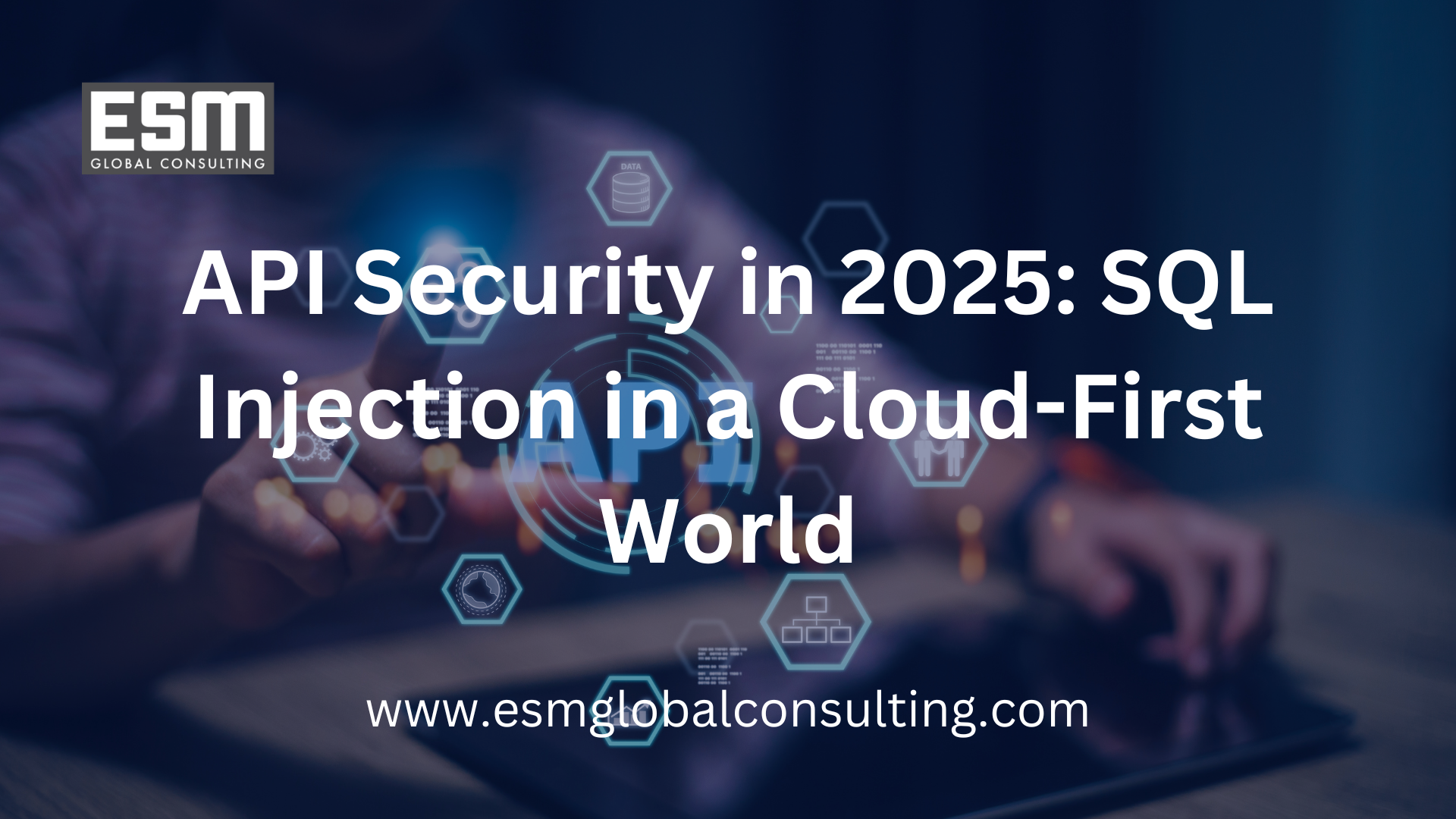API Security in 2025: SQL Injection in a Cloud-First World
The cloud-first approach has revolutionized how businesses operate, enabling unprecedented scalability, agility, and global reach. But with great convenience comes great responsibility—particularly in securing your APIs against evolving threats like SQL injection (SQLi). As we dive into 2025, the cloud-first era has reshaped the SQLi threat landscape, requiring businesses to rethink their strategies for securing APIs.
SQL Injection in a Nutshell
SQL injection is a technique where attackers manipulate SQL queries by injecting malicious input into an application. In an API context, these vulnerabilities often lurk in endpoints that interact with databases, such as login, search, or data submission features. A poorly coded API could allow an attacker to execute unintended database commands, extract sensitive data, or compromise the system.
The Cloud Factor: How Reliance Changes the Game
1. Increased Attack Surface
In a cloud-first environment, APIs connect everything—from microservices to third-party integrations. While this fosters innovation and efficiency, it also broadens the attack surface. A single vulnerable API endpoint can become the gateway for SQLi attacks, potentially exposing interconnected systems across your cloud infrastructure.
Fun Perspective: Think of APIs as doors in a vast cloud mansion. Forget to lock one, and intruders can waltz in, raid the kitchen, and sneak into the vault.
2. Shared Responsibility Model Misconceptions
Cloud providers like AWS, Google Cloud, and Azure follow a shared responsibility model. While they secure the cloud infrastructure, customers are responsible for securing their applications and data. Many businesses misunderstand this, assuming that their cloud provider will handle vulnerabilities like SQL injection.
The Wake-Up Call: Your cloud provider locks the building, but you need to secure your office. If SQLi sneaks into your APIs, that’s on you.
3. Scalability Challenges
Cloud-based applications scale dynamically to meet demand, but this scalability can exacerbate SQLi risks. A single attack on a vulnerable API in a cloud-first system could affect not just one instance but thousands, thanks to automated scaling.
Scary Scenario: Imagine an SQL injection script exploiting an endpoint and the issue scaling faster than your coffee order in the drive-thru.
4. NoSQL & Hybrid Environments
The shift toward NoSQL databases and hybrid setups (relational + NoSQL) introduces complexities. While NoSQL is immune to traditional SQLi, it has its own injection vulnerabilities. Hybrid systems amplify the challenge as organizations juggle multiple database types, each requiring tailored security measures.
Analogy: It’s like cooking in a hybrid kitchen with both gas and electric stoves. Without knowing the quirks of each, you’re bound to get burned.
2025 Trends in API Security Against SQLi
1. AI and Machine Learning
AI-driven security tools are becoming indispensable. These systems analyze API traffic in real-time, identifying anomalies and blocking malicious requests. Machine learning can detect subtle patterns in SQLi attempts that traditional filters might miss.
Example: AI-powered tools like AWS Shield and Cloud Armor can detect unusual query behaviors, like repeated UNION commands or suspicious input patterns, and neutralize them before damage occurs.
2. Zero Trust Architecture
Zero Trust eliminates the assumption that any user or service inside your network is trustworthy. Every API call is treated as potentially malicious, ensuring strict validation and authentication at every step.
Tagline: In a Zero Trust world, your API doesn’t even trust its own shadow.
3. API Gateways with Built-in Security
Modern API gateways, such as AWS API Gateway and Google Cloud Endpoints, now offer built-in security features like input validation, rate limiting, and logging. These tools can shield APIs from SQL injection by rejecting malformed requests before they reach the database.
4. Database-Level Defenses
Database vendors are also stepping up, with advanced features like:
Query whitelisting: Only pre-approved queries are executed.
Row-level security: Access is restricted based on user roles.
Dynamic data masking: Sensitive data is obscured in query results.
Smart Practice: Pair these with application-level security for a double-layered defense.
Fun Fact: Did You Know?
The concept of SQL injection isn’t new—it dates back to the late 1990s! Yet, it remains a top threat in 2025 because attackers continually find innovative ways to exploit poorly secured systems.
Proactive Steps for 2025 and Beyond
Embrace Parameterized Queries and ORMs
Avoid dynamically building SQL queries. Use parameterized queries or Object-Relational Mappers (ORMs) like Hibernate or SQLAlchemy.Adopt Secure API Design Principles
Implement input validation and output encoding.
Use rate limiting to mitigate brute-force attempts.
Leverage Cloud-Native Security Tools
Tools like AWS WAF, Google Cloud Armor, and Azure Security Center provide robust API protection.Regular Security Audits
Conduct periodic vulnerability assessments to identify and patch weaknesses in your APIs.Educate Your Team
Train developers on secure coding practices and the importance of API security.
Conclusion
The cloud-first world has transformed how businesses operate, but it also demands a reimagined approach to API security. SQL injection remains a persistent threat, and as APIs grow more integral to cloud infrastructures, the stakes only rise. By embracing modern security practices, leveraging cloud-native tools, and fostering a culture of security, businesses can protect their APIs and data in this ever-evolving landscape.
Secure Your APIs with ESM Global Consulting
At ESM Global Consulting, we specialize in safeguarding APIs for cloud-first enterprises. Let us help you stay ahead of threats like SQL injection while maximizing the potential of your cloud solutions.
Contact us today to future-proof your API security!


